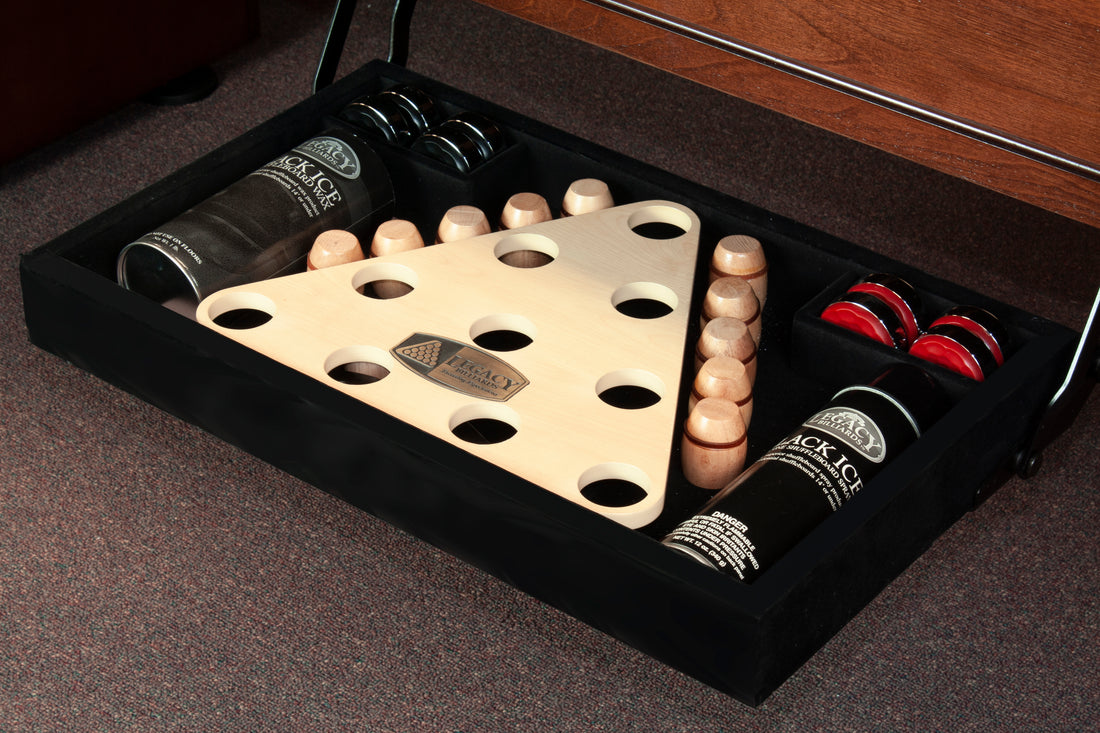One billiard ball is just like another one, right? Wrong. The quality of the billiard balls you use has an impact on the quality and accuracy of your game. In fact, most experienced players will tell you it isn’t always a defect in the table that makes a shot go awry. Sometimes it’s the fault of the billiard balls themselves.
History of Billiard Balls
Billiard balls were originally made of stone but were eventually replaced with balls made of wood and clay due to the weight of the stone itself. These balls were used until the 1600’s when ivory billiard balls became popular.
Ivory billiard balls were expensive and time consuming to make. Each tusk yielded only 4 or 5 balls. The balls themselves had to be cured for years to make them durable enough to withstand the stress of play without cracking or chipping. Many balls were rejected due to inconsistent density or defects in the ivory itself. As the elephant population in the world thinned it became obvious that billiard balls from another material were needed.
Today billiard balls are made from a combination of resin and plastic. This material is moldable and uniformly dense, perfect for high quality billiard balls that offer top quality play. The best balls are made in Belgium by Saluc and are made of phenolic resin.
Important Factors in Billiard Ball Selection
There are three main factors that affect the quality of a billiard ball. The first is the diameter tolerance held by the manufacturer. The diameter tolerance determines the perfect round shape. As a ball is machined, the diameter of the ball is set. High-quality balls are held to a strict tolerance, meaning variations are not tolerated. You can count on these balls to be as close as possible to perfectly round.
The same is not true of lower quality balls. Instead a tolerance is set for the diameter. These balls are machined to appear round and to approach perfect roundness. Their shape, however, is not guaranteed to be perfectly round. There is a tolerance for error that is allowed in the interests of saving costs during manufacturing.
The second factor is consistency of density. A billiard ball with a consistent density rolls true and straight. The weight of the ball is evenly distributed allowing the ball to roll evenly no matter where cue strikes it.
Billiard balls with an inconsistent density play erratically. They don’t bank properly. They zigzag while rolling at times because the weight is unevenly distributed. When you notice a ball rolling strangely it may not be the fault of the table, although it is often blamed on table roll. More often it is uneven weight distribution that causes erratic ball behavior.
The third factor is elasticity. Elasticity is the transfer of energy from the strike ball to the object balls during play. Ideally a ball will transfer 100% of its energy to the next ball during a stop shot. In fact, a stop shot gets its name from this elasticity factor. If you notice your strike ball continuing to travel after striking another ball evenly you are noticing a lack of elasticity. While this can be caused by wear and tear, it is more common with lower quality billiard balls.
Select High-Quality Balls for Optimal Play
High-quality billiard balls are a worthy investment for you and your family. A fine set of balls costs between $100 - $200 but lasts much longer than the $20-$50 set you find at the local department store. The high quality balls withstand enthusiastic play without losing elasticity or damaging the cloth of your table. They roll true and allow your entire family to learn skilled shots without having to compensate for ball roll caused by uneven weight or dimension.










